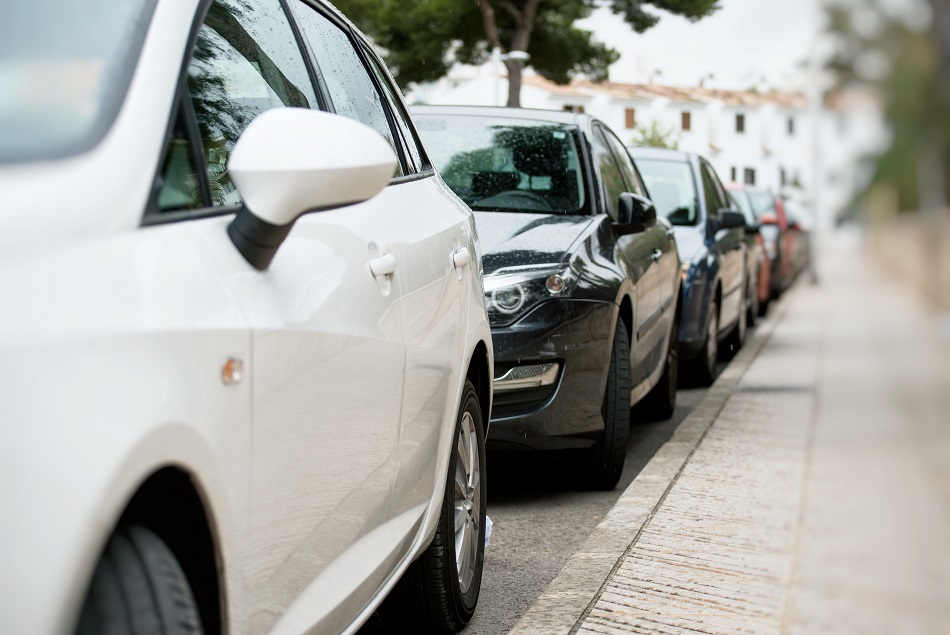By Kalwinder KaurMar 6 2013

Image Credit: Dmitri Ma/Shutterstock.com
Curb feelers are wires or springs fitted to a vehicle that act like whiskers to alert drivers to an obstruction or curb. They are fixed on the lower side of a vehicle body, close to the wheels. When the vehicle is too close to the curb, the protruding feelers scrape against it and make a noise to alert the driver. The feelers are flexible and do not break easily, the aim is to avoid damage to the wheels and hubcaps.
A good example of a curb feeler, also known as a curb alert sensor, is demonstrated in the following video describing the application of this device in lowering Mustangs to alert the driver of a front-end curb by sounding an alarm:
Mustang Curb Alert Front Air Dam Sensor Review
Curb feelers are still used on some hot rods to provide a 1950s look to the vehicle. They are popular in cars with whitewall tires where the white coating can be easily lost when scraped against the curb. They are fixed on the passenger side of some vehicles and added next to the front wheels in others. Some curb feelers may have one spring or wire and others have two for protecting a large area of the vehicle. They are made of metal or rubber, allowing the easy adjustment of these devices onto recreational vehicles.
Antenna-like rods are mounted on the lower part of the vehicle body to improve driving safety. Buses are also fitted with curb feelers that assist drivers in ensuring that the passengers can easily step to and from the curb.
Research
Recent developments in the function of automotive curb sensors include an electronic curb system that employs two pairs of optical sensor units for detecting any object at the front end of a vehicle while parking.
One pair of optical sensor units detects the object in the left front portion of the vehicle, while the other pair detects the right front portion of the vehicle.
The sensor units assist the driver by supplying information about the location of the object and the exact distance between the object and vehicle front end to prevent striking against the object. Thomas. F. Hinde from Fort Wayne developed a distance indicating device with energy wave generators, each having a focusing device for generating a directional focused wave beam.
Each of the wave generators is mounted onto a vehicle and positioned so that the device uses the point of impact for determining the distance between the object and the vehicle.
Current Applications
Curb feelers are mainly used for alerting drivers about any upcoming obstacles to aid the reduction in accidents.
Future developments
Curb feelers do not restrict car designs, and more than one curb feeler can be installed on the front, rear or both sides of the vehicle.
With the latest technology advancements, curb feelers now function as curb sensors. Although the system has changed, the application still remains the same. The only difference between a traditional curb feeler and modern sensors is that the latter is triggered in terms of proximity to an obstruction, whereas a traditional curb feeler operates when the vehicle comes into actual contact with the object.
In addition, curb sensors are usually fixed on the bumper of a car to release an alarm signal when obstacles are detected. Conversely, wireless parking sensors are installed at the front and rear of the car and emit ultrasonic radio waves to alert drivers. Further developments include the use of an audio system to emit a warning or beeping sound when the vehicle’s front or rear side approaches the obstacle or the curb.
There are many choices in warning systems as a result of technological advancements. Some sensing systems emit a continuous tone to warn the driver of obstacles and some other models to display the word “stop” when the vehicle is about a foot away from the curb.
Sources and Further Reading
This article was updated on 13th February, 2020.
Disclaimer: The views expressed here are those of the author expressed in their private capacity and do not necessarily represent the views of AZoM.com Limited T/A AZoNetwork the owner and operator of this website. This disclaimer forms part of the Terms and conditions of use of this website.